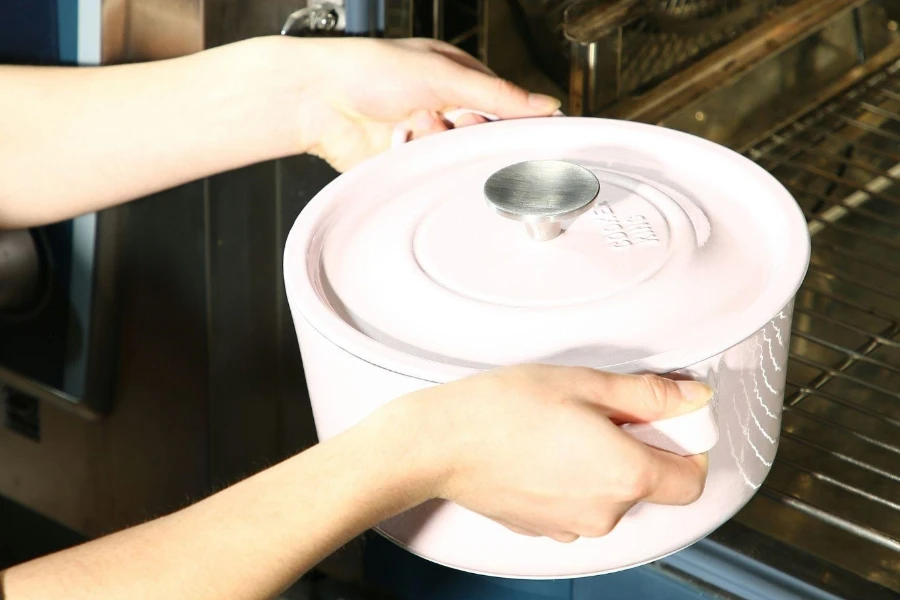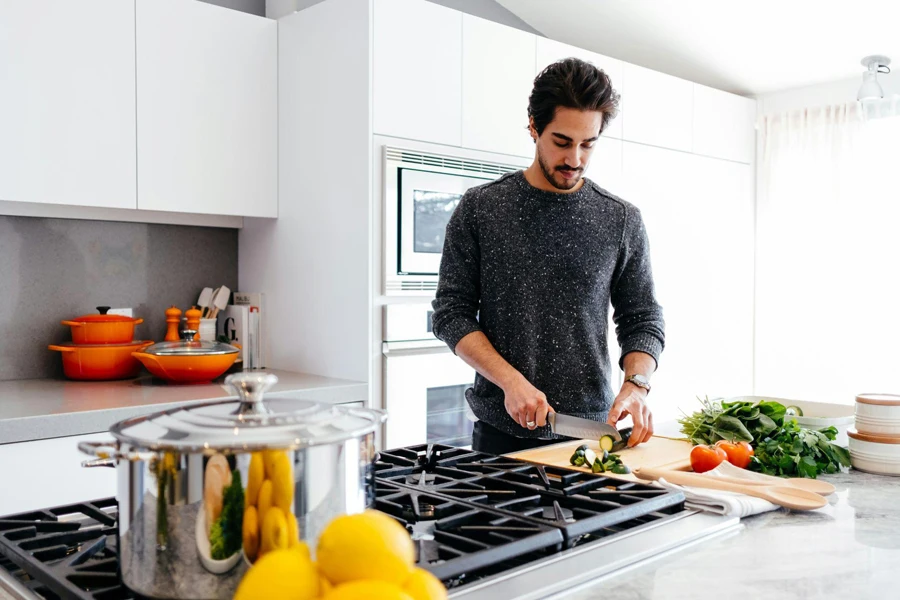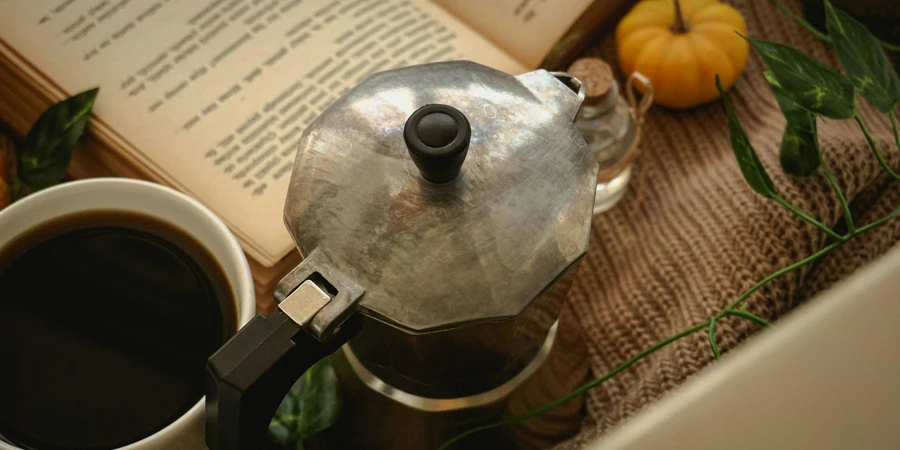Table of Contents
● Introduction
● Market overview
● Things to consider when selecting pressure cookers
● Types of pressure cookers and their features
● Conclusion
Introduction
Pressure cookers have revolutionized meal preparation, combining speed with efficiency to transform modern kitchen practices. These versatile tools leverage high-pressure steam to cook food faster, significantly cutting down cooking times compared to traditional methods. The result is not just quicker meals but also enhanced flavors and better nutrient retention, making pressure cookers a favored choice in fast-paced lifestyles. Their growing popularity is evident as more cooks turn to these efficient appliances to save time while still enjoying delicious, healthful dishes. As the demand for quick, effective cooking solutions rises, the pressure cooker stands out as an indispensable tool in both home and professional kitchens.

Market overview
The global pressure cooker market is currently on a significant upward trajectory, according to Fortune Business Insights. With its size valued at USD 5.08 billion in 2022, it is projected to reach USD 8 billion by 2030, growing at a compound annual growth rate (CAGR) of 5.53%. This expansion is fueled by the growing demand for versatile and efficient kitchen appliances that cater to the fast-paced lifestyles of modern consumers. Multifunctional pressure cookers are particularly in demand, appealing to those who value appliances that can perform various cooking functions efficiently and quickly.
Market trends are significantly influenced by consumer preferences leaning towards smart, energy-efficient kitchen solutions, as well as sustainable cooking options supported by government initiatives for energy efficiency in household appliances. The demand spans both household and commercial applications, with increased adoption noted in restaurants and hotels keen on optimizing cooking times and energy use. As major market players continue to innovate, they are introducing advanced features like programmable settings, enhanced safety mechanisms, and aesthetic improvements to meet the high expectations of today’s consumers and integrate seamlessly into the smart home trend.

Things to consider when selecting pressure cookers
Material and build quality
Choosing the right material for your pressure cooker significantly impacts its performance and longevity. Stainless steel is revered for its durability and resistance to rust and corrosion, making it a reliable choice for frequent use. It’s also non-reactive, which means it won’t interact with acidic foods, thus maintaining the flavor integrity of your dishes. Aluminum, while more cost-effective and excellent at conducting heat, tends to be less durable and more reactive with acidic ingredients, which could lead to food discoloration and alteration in taste. Hard-anodized pressure cookers provide a robust, non-reactive surface, combining the lightweight properties of aluminum with a strength that rivals stainless steel. This type makes it an ideal choice for those seeking a balance between performance and ease of handling.
Safety features
Safety is paramount when using pressure cookers due to their high-pressure functionality. Modern devices are equipped with multiple safety features to prevent accidents. A locking lid mechanism ensures the lid cannot be opened while the cooker is pressurized, thus avoiding potential scalds or burns. Pressure indicators signal the internal pressure level, helping users maintain control over cooking conditions. Additionally, safety release valves are critical as they automatically vent steam if the pressure becomes too high, preventing the risk of explosion. These features are essential for any pressure cooker, providing peace of mind in the kitchen.
Size and capacity
The size of the pressure cooker one chooses should correspond to your household’s needs. Sizes range widely, from small 1-2 liter models suitable for singles or couples to larger models that can accommodate 10 liters or more, ideal for large families or batch cooking. The key is to select a size that minimizes the need for multiple cooking sessions, which can save energy and time. Additionally, considering your storage space is important, as larger cookers require more room in kitchen cabinets or countertops.
Advanced features
Beyond basic pressure cooking, many modern cookers come equipped with advanced features that enhance their utility. Adjustable pressure settings allow for precise control over the cooking environment, making it possible to tailor the cooker’s performance to specific recipes or ingredients. Multi-cooker functions expand the appliance’s use beyond just pressure cooking, including options like slow cooking, rice cooking, and even yogurt making. The quick-release option in pressure valves is particularly useful for reducing pressure quickly without losing heat, perfect for delicate dishes that require immediate attention.
Types of pressure cookers and their features
Pressure cooker models and their unique features
The market for pressure cookers features a variety of models, each with unique capabilities that cater to different cooking needs. Some models are designed for basic cooking needs, offering simple pressure settings and durability, suitable for everyday home use. Other high-end models include advanced features such as digital displays, multiple pressure settings for precise cooking control, and pre-set menus for specific recipes. These models typically combine materials such as stainless steel and aluminum for optimal heat distribution and durability. Additionally, ergonomic designs are common in newer models, with features like easy-grip handles and lightweight construction, making them easier and safer to use in a bustling kitchen environment.
Traditional vs. modern pressure cookers
Comparing traditional to modern pressure cookers reveals significant advancements in technology and safety. Traditional cookers often rely on a single pressure setting and might lack built-in safety features, requiring close monitoring during cooking. In contrast, modern pressure cookers are equipped with multiple safety features, such as automatic pressure release and locking systems that prevent the lid from being opened while under pressure. Moreover, modern units are often multifunctional and capable of replacing several kitchen appliances, including slow cookers, rice cookers, and steamers. This multifunctionality is coupled with user-friendly interfaces, often with touch-screen controls that allow for effortless operation.
Features of pressure cookers
Modern pressure cookers increasingly integrate smart technology, enhancing their convenience and functionality. Features such as Bluetooth or WiFi connectivity allow users to control their cookers via smartphone apps, where they can adjust settings remotely and receive alerts when their food is ready. Some models even offer compatibility with smart home systems, enabling voice control through bluetooth devices. This integration into the smart home ecosystem appeals particularly to tech-savvy consumers looking for a high degree of convenience and connectivity in their cooking appliances. Ergonomic designs in modern pressure cookers also stand out, focusing on user comfort and safety. These designs often include cool-touch handles, easy-lock lids, and intuitive control panels that make the cookers accessible to all users, including those with limited kitchen experience. The thoughtful placement of vents and shields to direct steam away from the user further enhances safety, ensuring that the cooking experience is not only efficient but also safe.
Conclusion
Selecting the right pressure cooker involves considering various factors, including material and build, safety features, size, and capacity, along with the range of advanced features offered. Materials like stainless steel, aluminum, and hard-anodized provide options for durability and efficiency, while essential safety mechanisms such as locking lids and pressure indicators ensure safe use. The size of the cooker should align with household needs, optimizing the cooking process without occupying unnecessary space. Modern pressure cookers enhance this further with features like adjustable pressure settings and multifunctionality, integrating seamlessly into the smart home environment with technology-driven controls and ergonomic designs. As the ideal pressure cooker is chosen, whether for personal or professional use, reflection on these elements will help find a model that not only meets culinary needs but also contributes to a safer, more efficient, and technologically integrated cooking experience. These considerations will assist in investing in a kitchen appliance that enhances cooking efficiency and enjoyment.




